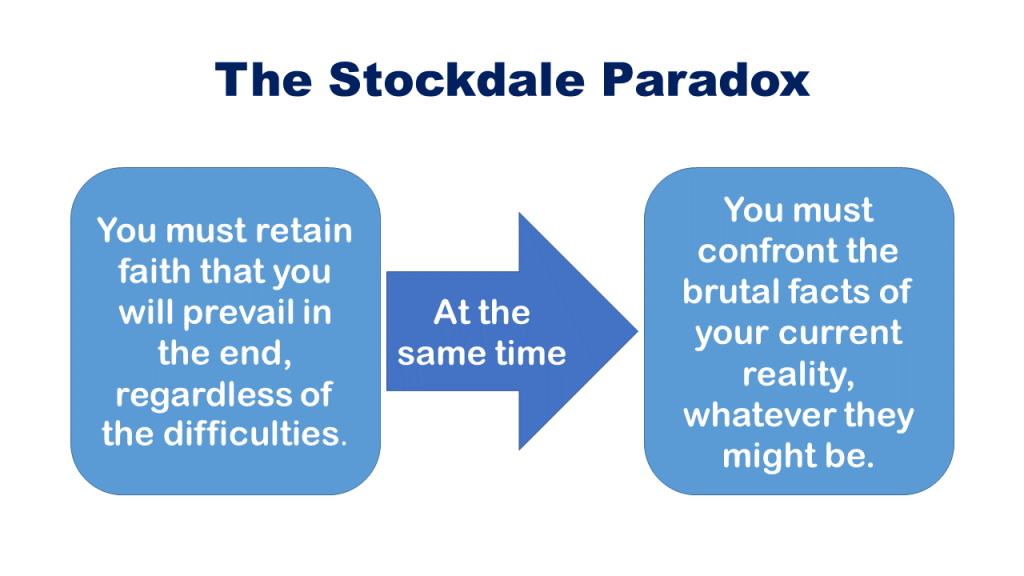In Jim Collin’s book, Good to Great, he describes the story of a naval office, James Stockdale who was a Vietnam prisoner of war. Stockdale found a way to survive his imprisonment by embracing both the harshness of his situation with a balance of healthy optimism.
Stockdale explained this idea as the following: “You must never confuse faith that you will prevail in the end — which you can never afford to lose — with the discipline to confront the most brutal facts of your current reality, whatever they might be.”
It is through this lens that I approach inclusion in schools.

Inclusion is a contagious ideal for which there is limited opposition. It is important, however, to contest such concepts, test them and present counter arguments so that we’re able to make informed decisions. What are the brutal facts of our current reality?
Whilst retaining faith that an inclusive education system is possible, this blog aims to highlight 3 pragmatic implications for inclusion that we need to chew through as a profession.
- When inclusion disrupts the learning of others
- Instruction is important
- No democratic mandate for full inclusion…yet
When inclusion disrupts the learning of others
This is the elephant in the room.
When you talk to teachers and those that work in school you will struggle to find anyone who opposes the idea of inclusion. You will, however, find many teachers who struggle to imagine what this might look like.
As I’ve mentioned before in a blog here:
Discussions around SEND in mainstream are primarily dominated by a handful of case studies. Usually these include pupils with SEMH needs presenting with challenging behaviours and disrupting learning for the majority. The pressure felt by teachers at the coal face quickly trickles up to school leaders who feel obliged to react in a manner which they feel is in the best interest of the majority -This often includes exclusion (in the broadest sense of the word). Because of the above, SEND in mainstream becomes synonymous with disruptive behaviours, teacher/workload pressure as well as parental complaints.
I address this point here not because I think these challenges are insurmountable but because we need to bring it to the fore if we want meaningful change.
Instruction is important
There is a misconception that pupils with SEND just need to be ‘safe and happy’ and pupils without need ‘evidence informed practice’. This is, of course, nonsense – all pupils need both.
It is important that all pupils have access to the very best teachers able to meet the needs of the individual.
If we are too quick to jump to a model of ‘full inclusion’ we risk undermining pupils’ access to high quality instruction by putting all children into the same classroom.
Inclusion is important. Learning is more important than place.
We can’t expect to place all pupils in a mainstream setting without considering the implications for what teaching looks like. I’ve heard the term ‘main-dumping’ as a phrase to describe pupils placed in mainstream settings in the name of inclusion with no/little adaptations made for individual need.
If, as in a full inclusion model, you increase the diversity of disability in your class room (without fundamental change in the system) you risk diluting the expertise of the teacher and therefore impact on the child.
- Should we be expecting all teachers to be domain-specific experts in all learning disability?
We need to consider the system implications of enabling domain specific expertise in the classroom whilst at the same time mitigate the workload implication on the individual teacher – nobody is going to compound issues around teacher recruitment and retention in the name of inclusion.
If the purpose of schools is for pupils to be in the same place then a ‘full inclusion model’ is an easy solution. If the purpose is something greater, then we need to acknowledge the limitations.
No democratic mandate for ‘full inclusion’…yet
In his blog, Hidden at the whole class level, Gary Aubin rightly identifies the tension between the idea of ‘additional to and different from’ as outlined in the SEND code of Practice and good teaching for pupils with SEND as being good teaching for all i.e inclusive practice not being outwardly visible.
In the current system, parents have often had to ‘fight’ for additional provision for their child. This is equally true of practitioners and teachers. The narrative is almost always around evidence of repeated failure, finance and bureaucracy.
In a sector where extra ‘stuff’ is the end-goal, a shift in education policy to a truly inclusive stance will include difficult conversations. As systems, structures and classrooms become more inclusive the ‘different from and additional to’ will become increasingly difficult to see.
At the moment, the idea of ‘full inclusion’ feels like a top-down approach with many academics and policy makers not realising the pragmatic implications of what this looks like on the ground. We need to listen to the voices of all teachers, support staff, parents and pupils so that we’re able to accurately ‘confront the brutal facts of our situation’.
Summary
This blog never set out to answer all of the questions, it simply set out to present them as discussions so that, as a profession, we’re able to confront the brutal facts of our current reality whilst retaining faith that an inclusive education system is possible.
Tony Booth and Mel Ainscow in their Index for Inclusion talk about inclusion as an unending process and argue that ‘inclusion happens as soon as the process of increasing participation is started. An inclusive school is one that is on the move’.
Phil Leaney
References and Signposts
Good to Great by Jim Collins: https://www.amazon.co.uk/Good-Great-Jim-Collins/dp/0712676090
SEND Code of Practice: https://www.gov.uk/government/publications/send-code-of-practice-0-to-25
Overview of Stockdale Paradox: https://bigthink.com/health/stockdale-paradox-confronting-reality-vital-success/#:~:text=The%20Stockdale%20Paradox%20is%20a,balance%20between%20realism%20and%20optimism
Hidden at whole-class level: https://sendmatters.co.uk/blog/
Index for Inclusion: https://www.eenet.org.uk/resources/docs/Index%20English.pdf
Inclusion Dialogue: https://bankoninclusion.com/419-2/
SEND Tribunals: https://schoolsweek.co.uk/send-tribunal-appeals-top-10000-for-the-first-time/